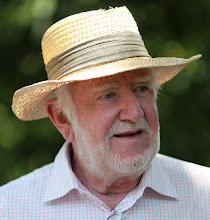Dr Andrew
Wakefield caused widespread alarm when he claimed that his research showed
that the childhood vaccine for measles, mumps and rubella could cause autism. In May 2010, he was banned from practicing
medicine in Britain for ethical lapses, including conducting invasive medical
procedures on children that they did not need. Part of the cost of Dr.
Wakefield’s research was paid by lawyers acting for parents seeking to sue
vaccine makers for damages.
His claimed link caused the use of the vaccine in Britain
and elsewhere in the world to plummet, a development that has contributed to a
sharp rise in childhood diseases in countries where the vaccine was in use. Measles
alone killed over 150 000 worldwide in 2008. It took more than a decade and
intensive research to prove that the vaccine was indeed safe. There are still
parents who refuse to have their children inoculated. Being banned from practice in Britain seems a mild punishment indeed.
But
what do you do about an international body that does something very similar? What do you do if it makes wild, unsubstantiated
claims, which seem calculated to cause a less-than-expert public to forego real
benefits for fear of harm?
In September 2012, the UN Environment Program [UNEP] released a report “Global Chemicals Report – Towards the sound management of chemicals.” The report itself is not yet available, but the Synthesis Report for Policy Makers can be downloaded from http://www.unep.org/hazardoussubstances/UNEPsWork/Mainstreaming/GlobalChemicalsOutlook/tabid/56356/Default.aspx. It is, of course, a major question why the synthesis should precede the report itself, but that is not the real problem.
In September 2012, the UN Environment Program [UNEP] released a report “Global Chemicals Report – Towards the sound management of chemicals.” The report itself is not yet available, but the Synthesis Report for Policy Makers can be downloaded from http://www.unep.org/hazardoussubstances/UNEPsWork/Mainstreaming/GlobalChemicalsOutlook/tabid/56356/Default.aspx. It is, of course, a major question why the synthesis should precede the report itself, but that is not the real problem.
The real
problem is that the Synthesis Report makes a lot of serious claims that lack
any form of substantiation. What is one
to make of a claim such as “The Global Chemicals Outlook states that of the 5.7
million metric tonnes of pollutants released in North America (United States, Canada
and Mexico), close to two million were chemicals that are persistent, able to
accumulate in humans and animals and are toxic. The report also deemed toxic a
further million tonnes of substances that are linked with or have suspected
links with cancer.”
Guess what gives cancers? Car tyres! Yes, they
contain “Polycyclic aromatic hydrocarbons and 1,3-butadiene. Some PAHs are
carcinogenic, and 1,3-butadiene is a known human carcinogen.” Indeed, tyres
contain carbon black, and that has traces of PAH’s in it; and 1,3-butadiene is
used in the manufacture of tyres. However, during manufacture it is polymerised into polybutadiene. Polybutadiene is harmless and widely used for drinking water piping.
Agricultural
chemicals come in for particularly strong condemnation. “Total pesticide
expenditures in South Africa rose 59% over the period 1999 to 2009, and are
projected to rise another 55% in the period 2009 to 2019.” “World consumption
of fertilizers is estimated to grow 2.6% per year in the period 2010 to 2014.”
So, if UNEP is to be believed, it is better to feed insects than to feed
ourselves, and better to starve than to fertilize our crops.
When you
dig a little further, you find, horror of horrors, “Products such as cell
phones and laptops are being purchased and used in regions of the world
recently thought to be too remote.” Ecopaternalism is rife.
But far rifer
are the stories of gloom and disaster. “Despite ubiquitous exposure to
chemicals in both developed and developing nations, little is known about the
total disease burden attributable to chemicals. In 2011, the World Health Organization
(WHO) reported that globally, 4.9 million deaths
(8.3% of
total) and 86 million Disability-Adjusted Life Years (DALYs) (5.7% of total)
were attributable to environmental exposure and management of selected
chemicals in 2004 for which data were available.”
Now for the good
news – “This figure includes indoor smoke from solid fuel use, outdoor air
pollution and second-hand smoke, with 2.0, 1.2 and 0.6 million deaths/year.
These are followed by occupational particulates, chemicals involved in acute
poisonings, and pesticides involved in self-poisonings, with 375,000, 240,000 and
186,000 deaths/year respectively.” So of the 4.9 million deaths, most had
causes other than what most would consider chemicals – smoke, air pollution and
suicide.
Driving the
message home are graphics straight out of the Greenpeace book of environmental
photojournalism:
Nowhere is
there any mention of the huge benefits chemicals have brought mankind. We enjoy
clean water due to the chemical destruction of a wide range of pathogens – that
in itself is worth tens of millions of lives annually. We feed ourselves, we clothe ourselves, and
our homes are warm and dry, thanks to the wonders of modern chemistry. Yet UNEP would have us believe that all
chemicals are bad, evil and to be avoided – particularly if you happen to be a
developing nation. Forego the benefits, is the message – you don’t want to
suffer as we in the developed world must, do you?
UNEP is the body behind the ban on the use of DDT. The ban may thicken the shells of the eggs of a few seabirds; but it causes the deaths of over one million Africans each year from that preventable disease, malaria.
How many must UNEP kill before reason sets in and its leaders are charged with crimes against humanity?
UNEP is the body behind the ban on the use of DDT. The ban may thicken the shells of the eggs of a few seabirds; but it causes the deaths of over one million Africans each year from that preventable disease, malaria.
How many must UNEP kill before reason sets in and its leaders are charged with crimes against humanity?



No comments:
Post a Comment